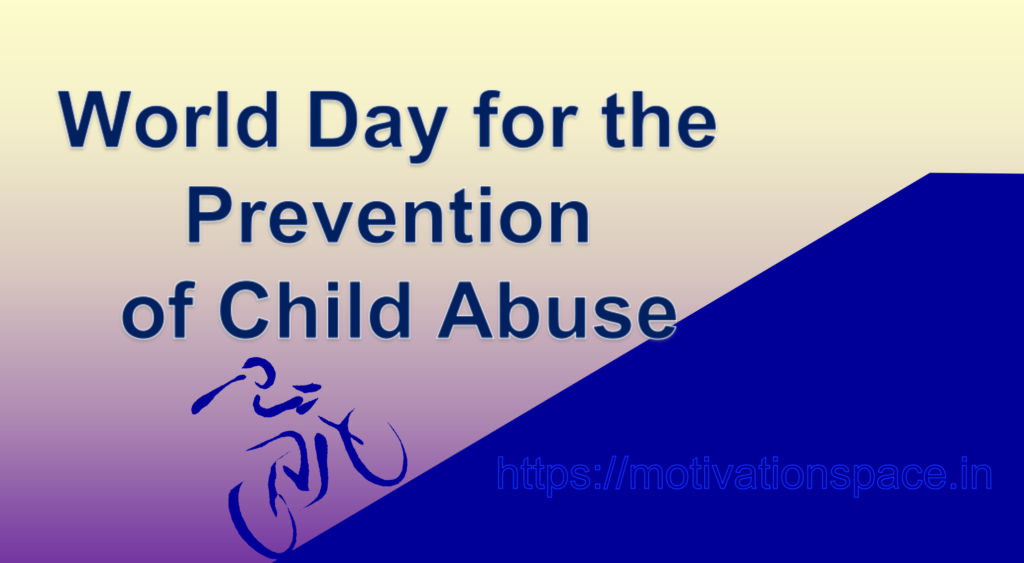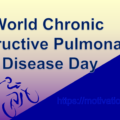Contents of this article
The World Day for the Prevention of Child Abuse observed annually on November 19th, stands as a powerful reminder of our collective responsibility to protect and nurture the most vulnerable members of our society – our children. This day serves as a global call to action, uniting governments, organizations, and communities in an effort to eliminate child abuse and safeguard the well-being and future of our children. In this blog, we will delve into the significance of this day, the forms and consequences of child abuse, and the measures taken to prevent it.
The Significance of World Day for the Prevention of Child Abuse:
World Day for the Prevention of Child Abuse is a day of immense significance for various reasons:
Awareness and Advocacy:
It serves as a powerful platform for raising awareness about child abuse and the need to prevent it. By shedding light on this critical issue, it helps mobilize individuals, communities, and governments to take action.
Protection of Children’s Rights:
The day emphasizes the importance of upholding the fundamental rights of children, including the right to live in a safe, nurturing environment free from harm and abuse.
Global Unity:
It unites people across the world in a common cause – protecting children from abuse. International collaboration is crucial to tackling this issue effectively.
Prevention and Intervention:
The day encourages preventive measures and early intervention to stop child abuse and provide support for affected children and families.
Policy and Legislation:
It underscores the significance of enacting and enforcing robust laws and policies to prevent child abuse and hold perpetrators accountable.
Understanding Child Abuse:
Child abuse encompasses a range of behaviors and actions that harm children physically, emotionally, or psychologically. It is a deeply troubling issue that affects children in various ways. Here are some common forms of child abuse:
Physical Abuse:
Physical abuse involves the intentional use of force to cause injury or harm to a child. It may include hitting, kicking, slapping, or any other form of physical violence.
Emotional Abuse:
Emotional abuse is characterized by actions that harm a child’s self-esteem, emotional well-being, and mental health. This can include constant criticism, humiliation, threats, or rejection.
Neglect:
Neglect occurs when a child’s basic needs, such as food, shelter, clothing, and medical care, are not adequately provided by their caregivers. It can result in physical and emotional harm.
Sexual Abuse:
Sexual abuse involves any non-consensual sexual activity with a child, including molestation, rape, and exposure to sexually explicit material. It causes profound psychological and emotional trauma.
Child Labor:
Child labor is a form of abuse where children are forced to work under conditions that are harmful to their physical and mental development. It often deprives them of their right to education and a normal childhood.
The Consequences of Child Abuse:
Child abuse has devastating and long-lasting consequences on the physical, emotional, and psychological well-being of children. These consequences can persist into adulthood and affect various aspects of their lives:
Physical Health Issues:
Abused children may suffer from physical injuries and long-term health problems, which can include chronic pain, disability, and even early mortality.
Emotional and Psychological Trauma:
Child abuse can lead to anxiety, depression, post-traumatic stress disorder (PTSD), and other mental health issues. It can also impact a child’s ability to form healthy relationships.
Cognitive and Educational Challenges:
Children who have experienced abuse may struggle with cognitive development, leading to learning difficulties and lower educational attainment.
Substance Abuse and Risky Behaviors:
Many survivors of child abuse turn to substance abuse and engage in risky behaviors as a way to cope with their trauma.
Inter-generational Cycle:
Child abuse often perpetuates an inter-generational cycle, where survivors may become abusers themselves or find it challenging to break free from the cycle.
Preventing Child Abuse:
Preventing child abuse requires a multi-faceted approach that involves governments, communities, families, and individuals. Here are some key strategies:
Education and Awareness:
Raising awareness about the signs and consequences of child abuse is essential. Schools, community organizations, and the media play a crucial role in educating the public.
Support for Parents:
Providing resources and support to parents can help them cope with stress and challenges, reducing the risk of child abuse.
Strengthening Child Protection Services:
Governments must invest in robust child protection services that can detect and respond to cases of abuse effectively.
Legal Frameworks:
Enacting and enforcing laws that protect children from abuse and hold perpetrators accountable is crucial.
Counseling and Therapy:
Offering counseling and therapy services for both survivors and abusers can help break the cycle of abuse.
Community Involvement:
Engaging communities in the prevention of child abuse is essential. Community members can provide support and report suspected abuse.
Hotlines and Helplines:
Establishing dedicated helplines and hotlines for reporting child abuse cases is vital. These services offer a safe and anonymous way to seek help.
International Initiatives:
International organizations, such as UNICEF, work tirelessly to prevent child abuse globally. They focus on advocating for children’s rights, supporting governments in implementing child protection policies, and raising awareness about the importance of preventing child abuse.
Conclusion for World Day for the Prevention of Child Abuse:
World Day for the Prevention of Child Abuse serves as a poignant reminder of our collective responsibility to protect the well-being and future of our children. By raising awareness, advocating for children’s rights, and taking proactive measures to prevent abuse, we can create a world in which every child can grow up safe, healthy, and free from harm. The prevention of child abuse is not just a moral imperative; it is a fundamental human right that ensures our children can thrive and reach their full potential, contributing to a brighter and more compassionate world for all. You may contact us for any query related to the contents of this website.


